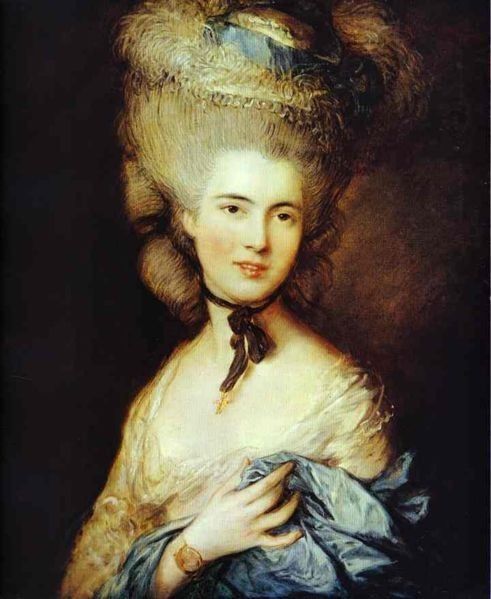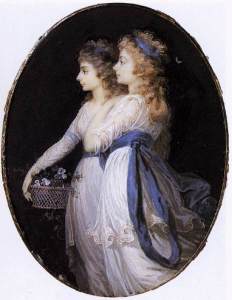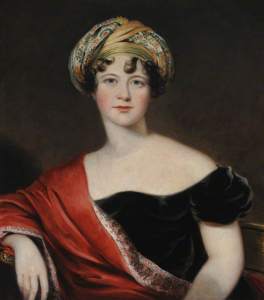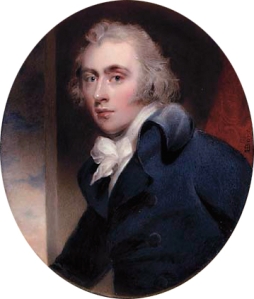
I first heard about Georgiana Cavendish from the film, The Duchess, staring Keira Knightley. In the film, she was portrayed as a beautiful broken woman. I needed to know how much of the film was true.
Let’s just say, they did not a bad job on portraying this strong, yet vulnerable, woman.
On 7 June 1757, Georgiana was born as the first child of John Spencer (later Earl Spencer) and Margaret Georgiana (née Poyntz, later Countess Spencer), at the Spencer family home, Althorp.
Georgiana’s mother is said to say after her birth; “that “I will own I feel so partial to my Dear little Gee, that I think I never shall love another so well”

Two siblings followed; Henrietta on 16 June 1761, and George on 1 September 1758.

John Spencer, great-grandson of John Churchill, 1st Duke of Marlborough, came from a wealthy English noble family. He built his Spencer family residence at St James’s, London.
Georgiana, as well as her siblings, were brought up in a happy home. There is no record of either of her parents having any extramarital affairs, which was actually rare in that era.
Georgiana grew to be close to her mother, which speculated that she was loved more over her two siblings.

In 1761, when her father was given the title of Viscount Spencer, she became The Honourable Georgiana Spencer. When in 1765, he then assumed the title of Earl Spencer, now making her, Lady Georgiana Spencer.

On 7 June 1774, Georgiana’s seventeenth birthday, she was married to William Cavendish, the 5th Duke of Devonshire, who was twenty-five at the time. Born on 14 December 1748.
The wedding took place at Wimbledon Parish Church. It was a small ceremony attended only by her parents, her maternal grandmother, Lady Cowper, one of her prospective brothers-in-law, and soon-to-be sister-in-law, the Duchess of Portland.
Her parents were at first reluctant to let their daughter go, but she was asked of marriage to one of the wealthiest and most powerful men in the land. Her father, who had always shown affection to his children, wrote to Georgiana; “My Dearest Georgiana, I did not know will lately how much I loved you; I miss you more every day and every hour.”
Mother and daughter continued to correspond throughout their lives, with many of their letter surviving today.
If Georgiana hoped to have a marriage similar to her parents, she would soon realize that was not to be the case. William Cavendish proved to be an emotionally reserved man who was quite unlike her father. He would seldom be at her side, rather spend his night at Brook’s playing cards.
And, unlike her father, William Cavendish would continue his adulterous behaviour throughout their married life.
Before they were married, William had fathered an illegitimate daughter, Charlotte Williams, born from a dalliance with a former milliner, Charlotte Spencer (who was of not relation to the House of Spencer, but still, odd). This was unknown to Georgiana until years after her marriage, when the death of the child’s mother, she was compelled to raise Charlotte herself. Even though Georgiana was very pleased with Charlotte, her mother expressed disapproval; “I hope you have not talk’d of her to people”. Georgiana replied; “She is the best humoured little thing you ever saw”.
For me, at this point, I don’t like William. Not telling his wife, before or after their marriage, of his illegitimate daughter angers me. Even if he thought because he was a man, he was allowed to do whatever he wanted, you have to tell me common curtesy existed.
If you think this is bad, just wait, he gets worse…

While on a retreat from London, in the City of Bath in 1782, Georgiana would meet Lady Elizabeth Foster, widely known as “Bess”. She became very close friends with Bess, who had become destitute after separating from her husband and three sons. Their friendship between the two women grew quickly, and in the position Bess was in, and with the Duke’s acquiescence, Georgiana agreed to having Bess live with them.
As you can guess, I’m not sure how long it took William to start a sexual relationship with Bess. It was also arranged for Bess to live with them permanently.
While it was a common thing for men of the upper class to have mistresses (thank goodness I’m not from this time period), it was not common or generally acceptable for a mistress to live so openly with a married couple. Furthermore, which to me is depressing, Georgiana became emotionally dependent on Bess, who she believed to be her best friend. Having no alternative, which makes me angrier, she became complacent over the matter.
The arrangement among the three is more commonly referred to as a ménage à trois, but, while the relationship between William and Bess was obviously sexual, there is no concrete evidence of anything beyond emotionally dependence, and a particular and open affection, on the part of Georgiana towards Bess.
In one of her letters, Georgiana wrote to Bess; “My dear Bess, do you hear the voice of my heart crying to you? Do you feel what it is for me to be separated from you?”

Some people have said that Bess was actually envious of Georgiana and wished for her position. Insinuated her way into the marriage by taking advantage of Georgiana’s friendship and love and having “engineered her way” into a sexual relationship with William.
While other people say that Bess did truly love Georgiana, which might be proven at Bess’s death. A locket, containing a strand of Georgiana’s hair, was found around her neck, as well as a bracelet also containing hair of Georgiana’s on a table beside her deathbed.
Whatever the true feelings were, she did bare two illegitimate children to William; a daughter, Caroline Rosalie St Jules, and a son, Augustus Clifford.

Despite her unhappiness with her detached and philandering husband (a nice way to calling him a bastard), as per the custom, Georgiana was not socially permitted to take a lover without first having produced an heir… That’s right, you heard me correctly.
On 12 July 1783, her first successful pregnancy resulted in the birth of a daughter, Lady Georgiana Dorothy Cavendish, called “Little G”. Georgiana, having a strong mothering sentiment since raising Charlotte, was insistent on nursing her children herself, contrary to the aristocratic custom of having a wet nurse.

On 29 August 1785, a second successful pregnancy resulted in another daughter; Lady Harriet Elizabeth Cavendish, called “Harryo”.

Finally, on 21 May 1790, Georgiana gave birth to a male heir; William George Spencer Cavendish, who took the title of Marquess of Hartington at birth, and was called “Hart”.

Now that she had birthed an heir, she was free to take a lover. While there is no evidence when she began her affair with Charles Grey, later Earl Grey and British Prime Minister, she did become pregnant with him in 1791.

She was sent off to France, believing she would die in childbirth, she wrote a letter to her recently born son stating; “As soon as you are old enough to understand this letter it will be given to you. It contains the only present I can make you, my blessing, written in my blood… Alas, I am gone before you could know me, but I lov’d you, I nurs’d you nine months at my breast. I love you dearly”.
While in exile in France, she also suffered from isolation and felt her separation from her children. To her eldest she wrote; “Your letter dated the 1st of Nov was delightful to me tho’ it made me very melancholy my Dearest Child. This year has been the most painful of my life… when I do return to you, never leave you I hope again. It will be too great a happiness for me Dear Georgiana and it will have been purchased by many days of regret, indeed ev’ry hour I pass away from you, I regret you; if I amuse myself or see anything I admire I long to share the happiness with you. If on the contrary I am out of spirits I wish for your presence which alone would do me good”
In order to return to England and her children, she conceded to her husband’s hypocritical demands and denounced her love for Charles Grey.
Records of her exile in France were subsequently erased from family records. However, their children had been informed as to the true reasons of her absence.
On 20 February 1792, Georgiana gave birth to a daughter, Eliza Courtney, without complications to mother and child. Georgiana was forced to give away the illegitimate daughter to her lover’s family. She would later be given the opportunity to pay visits to her illegitimate daughter, providing her with presents and affection. Eliza would grow to marry Lieutenant-Colonel Robert Ellice and bear a daughter named Georgiana.
Another thing I hate about William. He is allowed to keep his illegitimate child in his household, but not hers. Also, I believe that Georgiana found try love in Charles Grey.

Throughout her marriage, while she coped with the marital arrangements on the surface, she nevertheless suffered emotional and psychological distress.
She sought further personal consolation from a “dissipated existence” in passion; socializing, fashion, politics, writing. Addictions; gambling, drinking, and drugs. And affairs with a number of men, not just Grey, possibly including the bachelor, Duke of Dorset.
Georgiana was renowned for her beauty and character, alongside her marriage to the powerful, William Cavendish, she enjoyed pre-eminence in society and was a high emblem of the era.
Her keen sense made her the extravagant female leader in fashion and style in England. Her hair alone reached literally extraordinary heights above her exuberant costume.

Using her influence as a leading socialite and style icon, she contributed to politics, science and literature. She would gather around her a large salon of literary and political figures. Among her major acquaintances were the most influential figures of her time, including the Prince of Wales, later King George IV, Marie Antionette of France and her favourite in court, the Duchess of Polignac; Charles Grey, and Lady Melbourne, who was lover of the Prince of Wales. Newspapers chronicled her every appearance and activity. A bit like celebrities today.
She was called a “phenomenon” by Horace Walpole who proclaimed; “She effaces all without being a beauty; but her youthful figure, flowing good nature, sense and lively modesty, and modest familiarity make her a phenomenon”.
Madam d’Arblay, who had a preference for acquaintances of talent, found that her appeal was not generally for her beauty, but for far more which included fine, “manner, politeness, and gentle quiet”
Sir Nathaniel William Wraxall stated that her success as an individual lay; “in the amenity and graces of her deportment, in her irresistible manners, and the seduction of her society”.
When she was stepping out of her carriage one day, and Irish dustman exclaimed; “Love and bless you, my lady, let me light my pipe in your eyes!”
After, whenever other would compliment her, she would retort; “After the dustman’s compliment, all others are insipid”.
With all these compliments on Georgiana, I wonder what William saw in her. Was he too much into himself, that he didn’t see the qualities he had in his own wife?
Both the Spencer family and the House of Cavendish, were ardent supporters of the Whig party. However, because William’s high position in the peerage disallowed him to participate so commonly in politics, Georgiana took it as a positive outlet for herself.
In an age when the realization of women’s rights (if it wasn’t obvious already), and suffragettes were still more than a century away, Georgiana became a political activist as the first woman to make active and influential frontline appearances on the political scene.
Having begun her involvement in politics in 1778, when she inspired a mass of women to promote the Whig party, she relished Enlightenment and Whig party ideals and took it upon herself to campaign, particularly for a distant cousin, Charles James Fox, who was chief party leader alongside Richard Sheridan, for Whig policies which were anti-crown and advocated for liberty against tyranny. At the time of her involvement, King George III, (who detested the Whigs), and his ministers had a direct influence over the House of Commons, principally through their power of patronage.
The Prince of Wales, who always relished going against the grain of his father, joined the Whig party at the same time as his friend, Georgiana, became involved.
She was renowned for hosting dinners that became political meetings, taking joy in cultivating the company of brilliant radicals.
During the general election of 1784, she became a major subject of scrutiny. Fanciful rumours and political cartoons circulated during the campaign, ridiculing her for securing votes in exchange for sexual rewards.
Thomas Rowlandson, an artist and caricaturist, even satirized her with a rumour of her trading kisses in his print; “The Devonshire, or Most Approved Method of Securing Votes”.

Georgiana’s mother pleaded her to step down, but she was not daunted and was adamant in her activism. (This is why I chose to write a blog post on this woman!).
On election day, Georgiana walked the streets of London, even gaining blisters on her feet, meeting face-to-face with commoners as equals. She was instrumental in the success of Charles James Fox and Lord Hood, but after the extensive campaigning and negative media against her, after the win she retired from the political arena for a while. It wasn’t until 1788 that she returned to political activism, though behind the scenes.
As well as being devoted to politics, she was also an avid writer and composed a number of works, or both prose and poetry, some of them were published.
As a young girl she would compose poetry to her father, some of it would later circulate in manuscript and was read by Horace Walpole, an English art historian, man of letters and Whig politician, who said it was “easy and prettily expressed, though it does not express much”, and Reverend William Mason, who was more favourable with higher opinions.
Her first published literary works was Emma or The Unfortunate Attachment: A Sentimental Novel in 1773.

Like I mentioned before, even though it looked like she coped with the martial arrangements, she did suffer from (as well as other), gambling.
It was common among the aristocracy of her time, she routinely gambled for leisure and amusement. Her gambling spiralled into a ruinous addiction, made worse by her emotional instability.
During the first years of her marriage, she accumulated debts that surpassed the 4,000 pounds that William provided annually as pin money. Even her mother tried to deter her away from gambling, with unfortunately to no avail.
After she incurred over 300,000 pounds in debt, Georgiana implored her parents to give her a loan as she absolutely would not inform her husband of what she had done. Her parents agreed, but told her to inform William anyway, who nevertheless found out beforehand and repaid them.

This, however, did not stop her from gambling. For the rest of her life, she continued to amass an immense debt that she would always try to keep hidden from William, even though he was among the richest men in the land.
In confidence, she would ask for loans from the Prince of Wales and at one point, to try to settle some of her debts, she did not shrink from pressing her friend, the wealthy banker Thomas Coutts, for funds.
After returning from her exile in France, Georgiana was “changed woman”. William began suffering from gout (well deserved…), and as the perfect woman she is, spent her time at his side nursing him. With also a new miscarriage, this circumstance with her husband brought about a softening and closeness between the two.
In 1796, Georgianna succumbed to illness in one eye, after the doctors treated it, it resulted in a scarring of her face. However, “Those scars released her from her fears. All the inhibitions about whether she was beautiful enough or whether she was up to the job left her”.
In her early 40s, she devoted her time to the coming out of her eldest daughter, Lady Georgiana Dorothy Cavendish, in 1800. She saw her daughter wed the heir apparent of Earl Carlisle, Lord Morph, in 1801. It was the first and only time Georgiana saw one of her children marry.
Her health continued to decline well into her 40s, once reaching out to her mother complaining to her of jaundice. At first her mother believed she was just ill from her gambling, but she, as well as those around Georgiana, realised she was truly sick. It was thought to be suffering from an abscess on her liver.
On 30 March 1806 at 3:30, at the age of 48, Georgiana Cavendish passed away. She was surrounded by William, her mother, her sister Henrietta, her eldest daughter (who was 8 months pregnant), and Bess.
For the first time, William showed moving emotion towards his late wife, as a contemporary wrote; “The Duke has been most deeply affected and has shown more feeling than anyone thought possible – indeed every individual in the family are in a dreadful state of affliction”.
Their eldest daughter, Georgiana Dorothy, Countess of Carlisle, poured out her feelings; “Oh my beloved, my adored departed mother, are you indeed forever parted from me. Shall I see no more that angelic countenance or that blessed voice. You whom I loved with such tenderness, you who were the best of mothers, adieu. I wanted to strew violets over he dying bed as she strewed sweets over my life, but would not let me”.
The Prince of Wales himself lamented; “The best natured and the best-bred woman in England is gone”.
Thousands of people of London congregated at Piccadilly, where the Cavendish home in the city was located, to mourn her.
She was buried at the family vault at All Saints Parish Church, Derby (now Derby Cathedral).

I hope as her legacy, we focus more on her attributes to women’s rights in politics, and also how, even though she was married to a rich man, happiness isn’t just money.
I’m sad she never got to experience a happy marriage like her parents, but having children who adored her, hopefully made up for it.
I hope you enjoyed reading about Georgiana as much as I have been researching her. Another fascinating woman to admire.

I also first heard about her in The Duchess. I instantly became fascinated by her and it saddens me how her husband treated her. I agree that it was not fair that she had to give up her daughter, but his stayed with them!
LikeLike